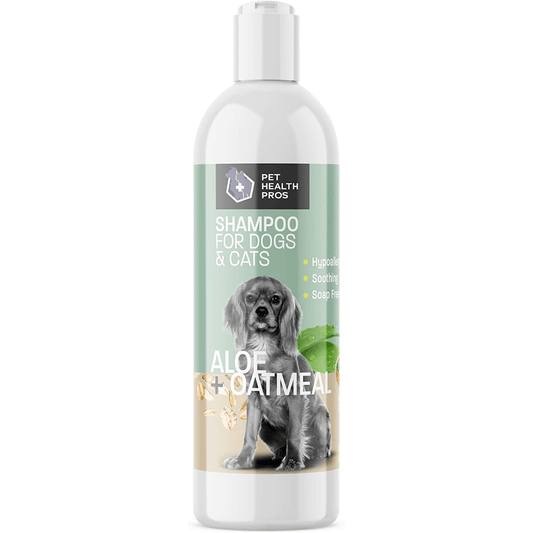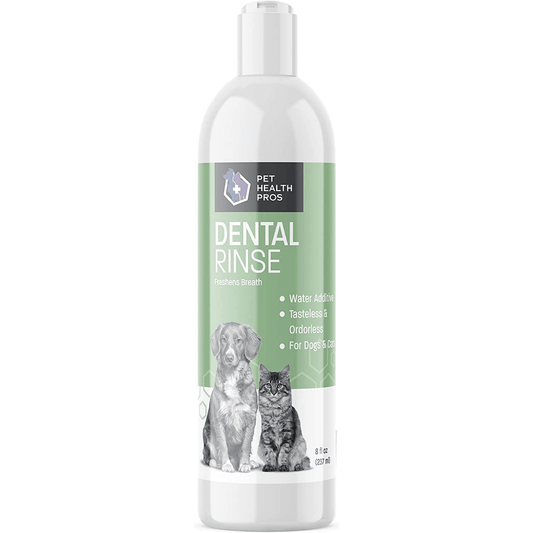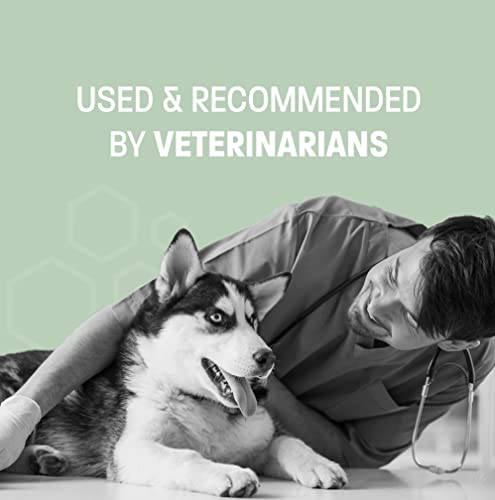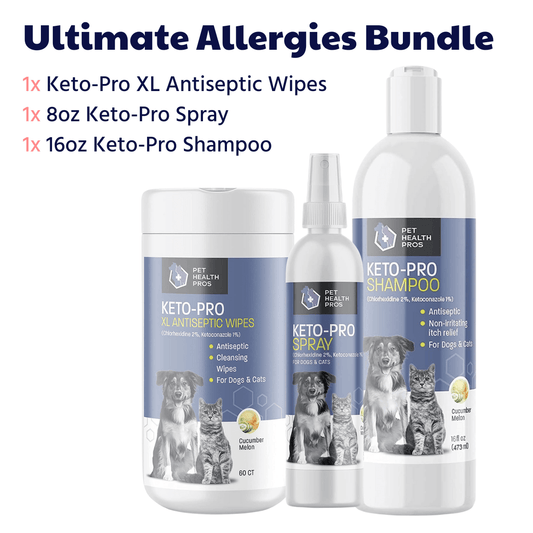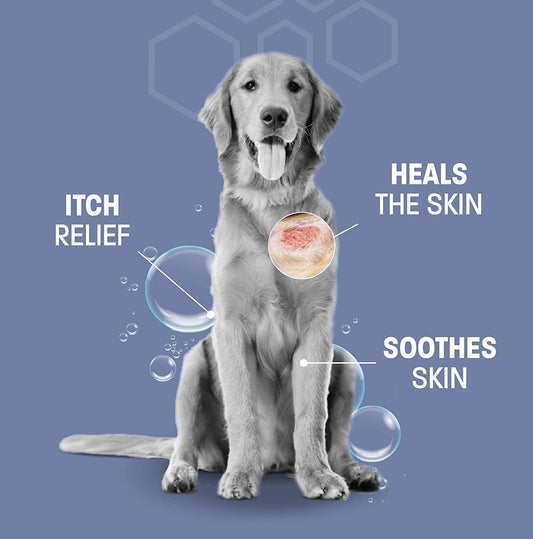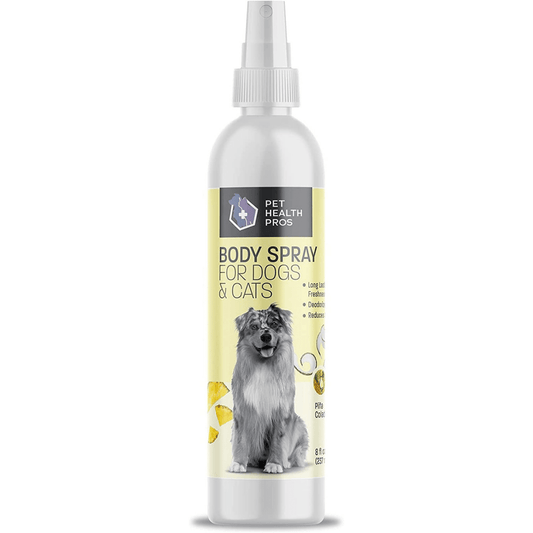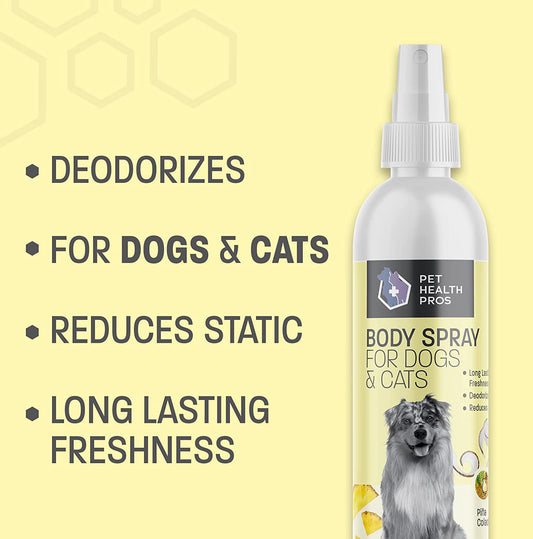Dogs are wonderful companions, but they can sometimes chew on things they shouldn't. Understanding why dogs chew and how to prevent it is important for keeping your belongings safe. This article offers helpful tips on effective dog chewing deterrents to protect your home from your furry friend's chewing habits.
Key Takeaways
- Dogs chew for many reasons, including natural instincts and teething.
- Choosing the right dog chewing deterrent can help protect your belongings.
- Training your dog with positive methods is key to preventing unwanted chewing.
- Creating a safe environment with chew-proof options and toys is essential.
- If chewing persists, consult a vet to rule out any health issues.
Understanding Why Dogs Chew
Dogs chew for various reasons, and understanding these can help you manage their behavior effectively. Chewing is a natural instinct for dogs, and it serves multiple purposes in their lives.
Natural Instincts and Behavior
Dogs are naturally inclined to chew as part of their instinctual behavior. This can include:
- Exploring their environment
- Keeping their teeth clean
- Relieving boredom
Teething in Puppies
Puppies, like human babies, go through a teething phase. During this time, they may chew more than usual to:
- Alleviate discomfort from emerging teeth
- Soothe their gums
- Explore their new world
Boredom and Anxiety
When dogs feel bored or anxious, they may resort to chewing as a way to cope. Signs of boredom or anxiety can include:
- Destructive behavior
- Excessive barking
- Restlessness
Understanding why your dog chews is crucial for finding the right solutions. Addressing the root causes can lead to a happier, healthier pet.
In summary, recognizing the reasons behind your dog's chewing habits can help you choose effective strategies to protect your belongings while ensuring your dog's needs are met. For instance, using anti-chew sprays can deter destructive chewing by introducing unpleasant tastes, but it's essential to address underlying issues like boredom and anxiety as well.
Choosing the Right Dog Chewing Deterrent
When it comes to protecting your belongings from your dog's chewing habits, selecting the right deterrent is crucial. There are various options available, and understanding them can help you make an informed choice.
Types of Deterrents Available
- Sprays: These are often bitter-tasting solutions that can be applied to furniture or other items you want to protect.
- Chew Toys: Durable toys designed specifically for chewing can redirect your dog's attention.
- Behavioral Deterrents: These include training methods that discourage chewing through positive reinforcement.
How to Use Deterrents Effectively
- Apply consistently: Make sure to use the deterrent regularly for the best results.
- Combine methods: Using a mix of sprays and toys can be more effective than relying on one method alone.
- Monitor your dog: Keep an eye on your dog to ensure they are not chewing on inappropriate items.
Safety Considerations
- Always check the ingredients of sprays to ensure they are safe for pets.
- Choose chew toys that are appropriate for your dog's size and chewing strength.
- Consult with a veterinarian if you have concerns about specific products.
Remember, finding the right deterrent may take some time and experimentation. Be patient and adjust your approach as needed to find what works best for your dog.
By understanding the different types of deterrents and how to use them effectively, you can help protect your belongings while ensuring your dog's chewing needs are met. This balance is essential for a happy and healthy pet.
Training Techniques to Prevent Chewing
Positive Reinforcement Methods
One of the best ways to train your dog is through positive reinforcement. This means rewarding your dog when they chew on appropriate items instead of your belongings. Here are some effective methods:
- Use treats to reward your dog when they choose their toys over furniture.
- Praise your dog with a happy voice when they are chewing on the right things.
- Create a special playtime with their favorite toys to encourage good chewing habits.
Redirecting Chewing Behavior
If you catch your dog chewing on something they shouldn’t, it’s important to redirect their attention. Here’s how:
- Calmly take the item away from them.
- Offer them a suitable chew toy instead.
- Encourage them to play with the toy and praise them when they do.
Consistency in Training
Being consistent is key to effective training. Make sure everyone in your household follows the same rules. Here are some tips:
- Set clear boundaries about what is acceptable to chew.
- Use the same commands and signals for your dog.
- Regularly practice training sessions to reinforce good behavior.
Remember, training takes time and patience. Stay committed to helping your dog learn the right chewing habits.
Creating a Chew-Proof Environment
Creating a safe space for your dog is essential to prevent unwanted chewing. By dog-proofing your home, you can protect your belongings and keep your pet happy. Here are some effective strategies:
Dog-Proofing Your Home
- Identify problem areas: Look for spots where your dog tends to chew, such as furniture, shoes, and cords.
- Use barriers: Consider using gates or closed doors to keep your dog away from certain areas.
- Remove temptations: Keep items that are prone to chewing out of reach.
Providing Appropriate Chew Toys
- Choose durable toys: Invest in high-quality chew toys that can withstand your dog's chewing habits.
- Rotate toys: Keep your dog interested by rotating their toys regularly.
- Encourage play: Engage your dog with toys that promote active play, which can reduce boredom.
Supervising Your Dog
- Monitor behavior: Keep an eye on your dog, especially during the initial training phase.
- Redirect chewing: If you catch your dog chewing on something inappropriate, redirect them to a chew toy.
- Use deterrents: Consider applying no-chew spray in problem areas to discourage chewing on furniture, shoes, and cords.
A well-prepared environment can significantly reduce destructive chewing habits.
By following these steps, you can create a chew-proof environment that keeps both your belongings safe and your dog content.
Addressing Underlying Issues
Understanding the reasons behind your dog's chewing habits is crucial for effective management. Addressing the root causes can lead to better outcomes than merely applying deterrents. Here are some key areas to focus on:
Identifying Anxiety Triggers
- Observe your dog's behavior in different situations.
- Note any patterns that lead to excessive chewing.
- Common triggers include loud noises, separation from owners, or changes in routine.
Ensuring Adequate Exercise
- Regular physical activity can help reduce anxiety and boredom.
- Aim for at least 30 minutes of exercise daily, depending on your dog's breed and age.
- Activities can include walks, playtime, or agility training.
Consulting a Veterinarian
- If chewing persists, it may be a sign of underlying health issues.
- A vet can help rule out medical problems and suggest appropriate solutions.
- They may also recommend behavioral specialists if needed.
By understanding and meeting pets' needs, owners can foster a harmonious relationship and reduce destructive chewing behaviors.
In summary, addressing the underlying issues of chewing behavior is essential. By identifying anxiety triggers, ensuring adequate exercise, and consulting a veterinarian, you can create a more supportive environment for your dog. This holistic approach can lead to lasting results, combining deterrents with behavioral solutions for a happier pet.
DIY Solutions for Dog Chewing Deterrent
When it comes to preventing your dog from chewing on your belongings, homemade solutions can be effective. Here are some simple DIY methods you can try:
Homemade Spray Recipes
- Apple Cider Vinegar Spray: Mix equal parts of water and apple cider vinegar in a spray bottle. Spray on furniture or items you want to protect.
- Chili Pepper Spray: Combine water with a few tablespoons of chili powder. This spicy solution can deter your dog from chewing.
- Lemon Juice Solution: Mix water with lemon juice. The sour taste can help keep your dog away from certain areas.
Using Natural Ingredients
- Citrus Peels: Place citrus peels around areas you want to protect. Dogs often dislike the smell of citrus.
- Vinegar: The strong scent of vinegar can be a natural deterrent.
- Essential Oils: Some oils, like eucalyptus or peppermint, can be effective. Just ensure they are safe for dogs.
Cost-Effective Alternatives
- Bitter Apple Spray: This is a popular commercial product, but you can make your own with vinegar and water.
- Homemade Deterrent Paste: Mix flour, water, and a bitter substance like cayenne pepper to create a paste that can be applied to furniture.
Remember, consistency is key. Regularly applying these solutions can help reinforce the message to your dog that certain items are off-limits.
By using these DIY methods, you can create a safer environment for your dog while protecting your belongings from unwanted chewing. Experiment with different solutions to find what works best for your furry friend!
Monitoring and Adjusting Strategies
Tracking Progress and Success
To effectively manage your dog's chewing habits, it’s important to keep track of their progress. Regularly observe your dog's behavior and note any changes. This can help you understand what works and what doesn’t. Here are some tips for tracking:
- Keep a daily log of chewing incidents.
- Note the times and situations when chewing occurs.
- Record any changes in your dog's interest in toys or deterrents.
Adapting to Your Dog's Needs
Every dog is unique, and their chewing habits may change over time. Be prepared to adjust your strategies based on your dog's preferences and behaviors. Consider the following:
- Monitor your dog's interest in their toys and switch them out if they seem bored.
- Test new deterrents if your dog is no longer excited about their favorite toy.
- Pay attention to any changes in your dog's chewing habits, as they may indicate underlying issues.
Seeking Professional Help if Needed
If you find that your dog's chewing is persistent despite your efforts, it may be time to consult a professional. A veterinarian or a dog trainer can provide valuable insights and tailored strategies. Don’t hesitate to seek help if you feel overwhelmed.
Remember, understanding your dog's behavior is key to finding the right solutions. Adjusting your approach can lead to better outcomes for both you and your pet.
To keep your strategies effective, it's important to regularly check and tweak them. This way, you can make sure they are working well for you. Don't wait! Visit our website today to discover how our products can help you and your pets stay healthy and happy!
Conclusion
In summary, keeping your belongings safe from your dog's chewing can be a challenge, but it's definitely possible. By using the right tools and strategies, you can teach your dog what is okay to chew on and what isn't. Remember to provide plenty of chew toys and engage in regular playtime to keep your dog happy and busy. Consistency is key, so be patient and stick to your training. With time and effort, you can protect your items while ensuring your furry friend stays content.
Frequently Asked Questions
Why do dogs chew on things?
Dogs chew for many reasons, like it's a natural behavior, they could be teething, or they might be bored or anxious.
What types of chewing deterrents are available?
There are sprays, bitter-tasting solutions, and special toys designed to discourage chewing.
How can I effectively use a chewing deterrent?
Apply the deterrent to items you want to protect and make sure to reward your dog when they chew on their toys instead.
Is it safe to use chewing deterrents?
Most deterrents are safe, but always check the ingredients and consult your vet if you're unsure.
What can I do to create a chew-proof environment?
You can dog-proof your home by removing tempting items, providing chew toys, and keeping an eye on your dog.
How do I know if my dog's chewing is a problem?
If your dog is damaging furniture or other belongings regularly, it might be a sign of anxiety or boredom that needs to be addressed.


